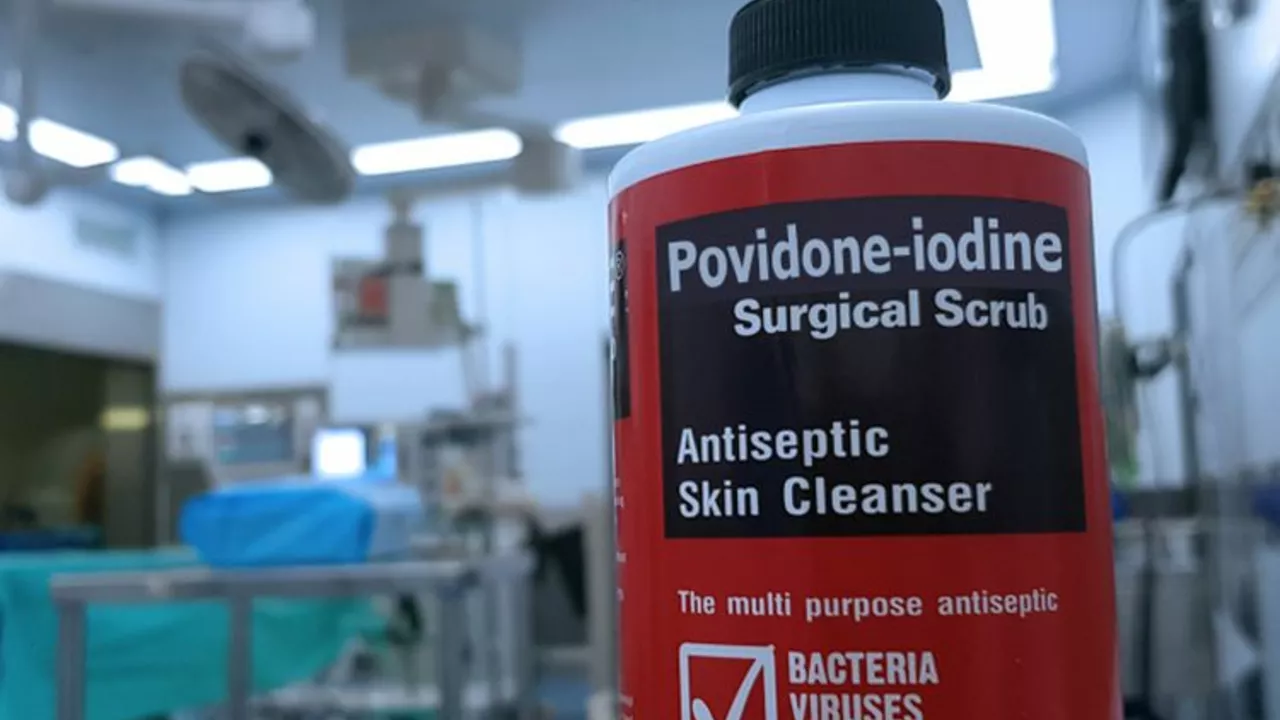Understanding Povidone-Iodine
Before diving into the safety and side effects of povidone-iodine, it's important to understand what exactly it is. Povidone-iodine is a broad spectrum antiseptic for topical application. It's most commonly used in the form of a skin disinfectant, but can also be used to treat small wounds and burns. It's a staple in many first aid kits, and is also used extensively in medical settings. By killing bacteria, viruses, and fungi, it helps to prevent infections.
Safe Usage of Povidone-Iodine
Povidone-iodine is generally safe for most people when used properly. However, it should always be used externally, and never ingested or applied to large areas of the skin. It's also important to avoid using povidone-iodine if you're allergic to iodine. If you're unsure, a patch test can be done to check for any adverse reactions. Remember, safety always comes first when using any kind of medication, including povidone-iodine.
Common Side Effects of Povidone-Iodine
Like any medication, povidone-iodine can have side effects. The most common side effects include skin irritation, rash, or redness where the medicine was applied. If these side effects occur, they're typically mild and go away on their own. However, if they persist or worsen, it's important to seek medical attention. Remember, everyone's body reacts differently to medications, so what may be a mild side effect for one person could be more severe for another.
Understanding Allergic Reactions to Povidone-Iodine
While rare, some people may have an allergic reaction to povidone-iodine. Symptoms can include hives, difficulty breathing, and swelling of the face, lips, tongue, or throat. If you experience any of these symptoms, seek immediate medical attention. Again, if you know you're allergic to iodine, it's best to avoid povidone-iodine altogether.
Usage of Povidone-Iodine in Medical Settings
In medical settings, povidone-iodine is often used as a disinfectant before and after surgery. It's also used to clean wounds and burns to prevent infection. However, even in these controlled environments, it's important to monitor for any potential side effects or allergic reactions.
The Effect of Povidone-Iodine on Thyroid Function
Povidone-iodine does contain iodine, which can affect the thyroid gland. This is especially true if you have a pre-existing thyroid condition or are using povidone-iodine over a large area of skin. If you have a thyroid condition, be sure to talk to your doctor before using povidone-iodine.
Special Considerations for Pregnant or Nursing Women
While povidone-iodine is generally safe, pregnant or nursing women should use it with caution. Again, this is due to the iodine content, which can affect the thyroid gland. If you're pregnant or nursing, it's best to discuss the use of povidone-iodine with your healthcare provider.
Interactions with Other Medications
As with any medication, povidone-iodine can interact with other medications. This is especially true for medications that affect the thyroid gland. If you're taking any other medications, be sure to discuss the use of povidone-iodine with your healthcare provider.
Conclusion: Weighing the Benefits and Risks
Like any medication, povidone-iodine has both benefits and risks. It's an effective antiseptic that can help prevent infections, but it can also have side effects and interactions with other medications. As always, it's important to use it responsibly and under the guidance of a healthcare provider. By understanding the safety and side effects of povidone-iodine, you can make an informed decision about its use.



Kyle Garrity
12 July / 2023I totally get why many people look to povidone‑iodine as a go‑to antiseptic, especially when dealing with minor cuts and scrapes. It’s comforting to know there’s a tried‑and‑true option that tackles a broad range of germs. Just remember that everyone’s skin can react differently, so a quick patch test never hurts. If you notice any lingering redness or irritation, it’s wise to give your skin a break and maybe consult a pharmacist. Staying informed and listening to your body are the best ways to keep minor injuries from turning into bigger issues.